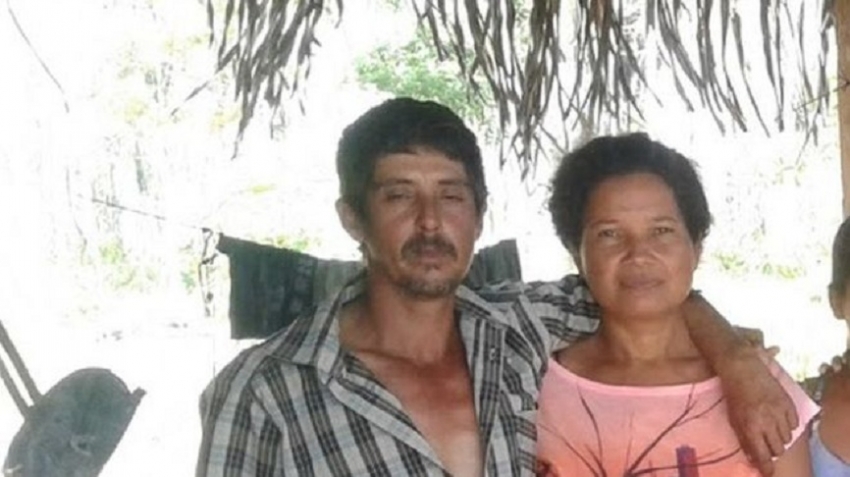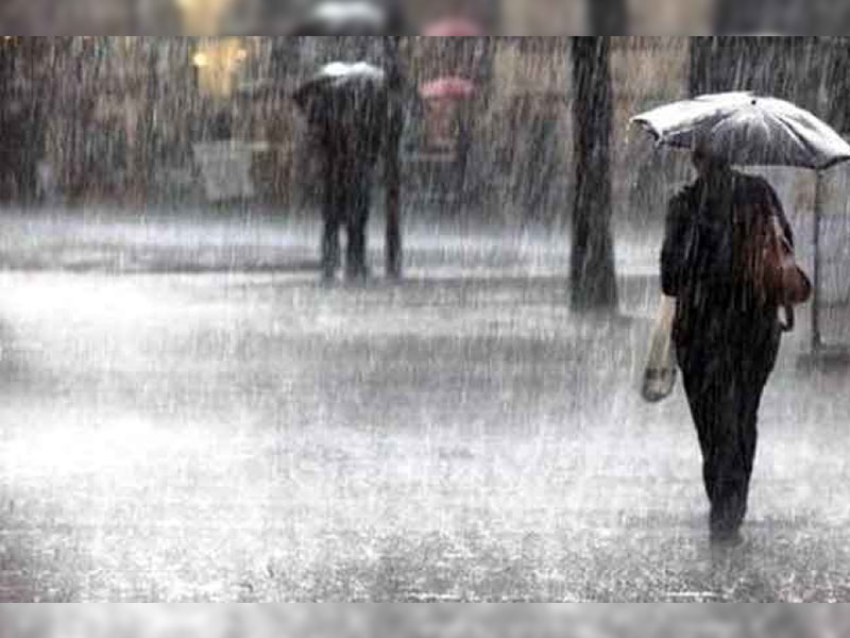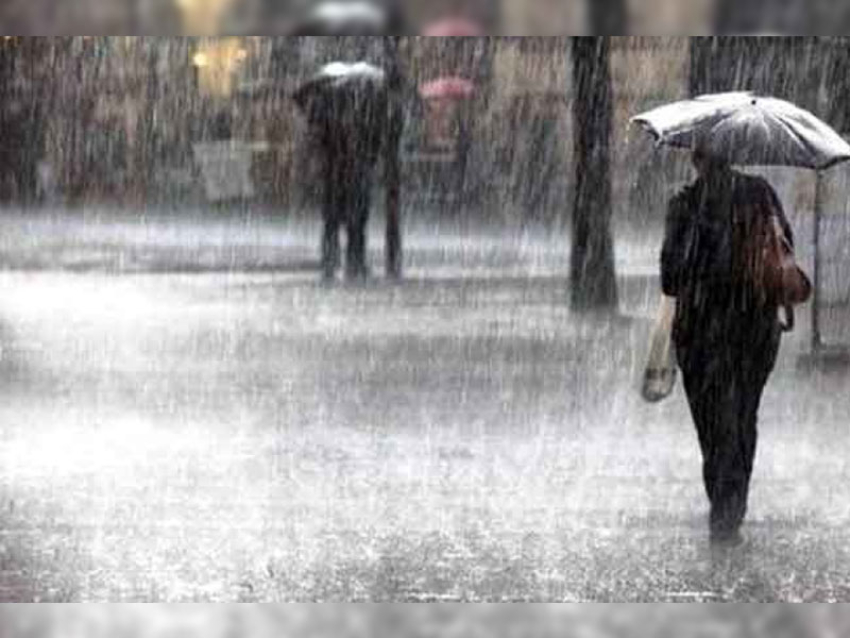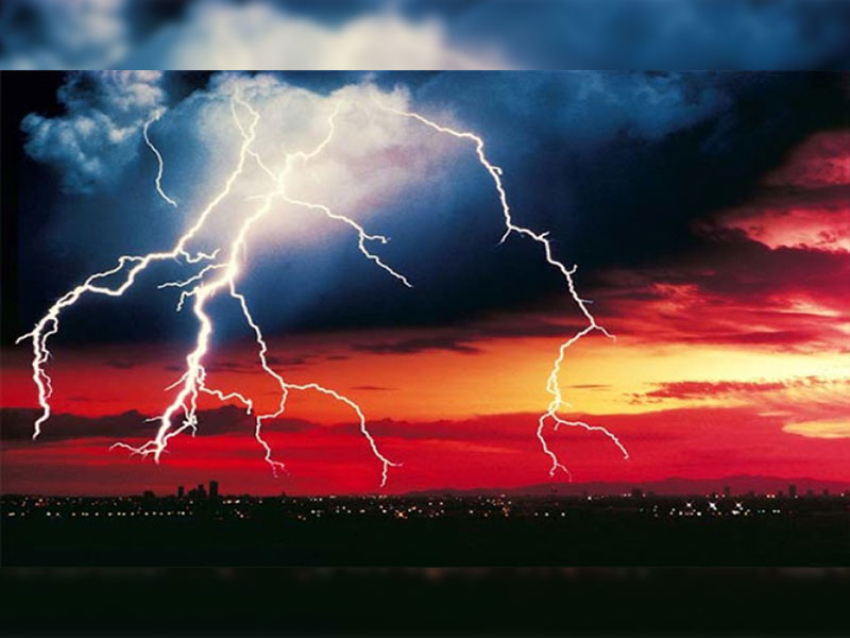Farmers Eidi and Romildo died while trying to salvage their home The home of Eidi Rodrigues and her husband Romildo - a wooden shack with a thatched roof - now lies in ruins.It was their first house, and it made them proud.The couple lived in Machadinho D'Oeste, a rural village in the Amazon state of Rondonia in north-west Brazil.It is a region marred by land disputes, and among communities in Machadinho D'Oeste, it is common practice to clear land for pastures and crops.Fires had been a constant concern for the couple, who feared that those started by their neighbours could spread to their backyard, especially during periods of drought.On 13 August, Eidi and Romildo's worst fears were realised.
The wooden shack was the first ever property the couple ownedThe couple died while trying to protect their home, unable to escape when the flames got out of control."People use fire to clear the land in this region, but on that day it was very windy. The fire spread too quickly and didn't give them time to run away," Jeigislaine Carvalho, one of Eidi's daughters, told the BBC.What is happening in the Amazon?A large number of fires are ravaging parts of the Amazon, a tropical rainforest that spans much of Brazil and other South American countries.Satellite data shows a huge increase in fires burning in the Brazilian Amazon in particular.
Brazil's National Institute for Space Research (Inpe) says 87,257 fires have been recorded so far in the country this year, a 76% increase on 2018.In Rondonia state alone, there have been more than 6,500 fires so far, a rise of 146% on 2018, Inpe data show.The extent of the fires has caused concern and outrage across the globe, with world leaders calling on Brazil's President Jair Bolsonaro to take action.French President Emmanuel Macron has described the steep rise in fires as an "international crisis" which critics have blamed on Mr Bolsonaro's anti-environmental rhetoric and soft stance on deforestation violations.
An aid package worth $22m (£18m), offered by countries in the G7, has been rejected by Brazil's government.Brazilian ministers said the money was not needed and they accused foreign powers of wanting control of the Amazon.Eidi and Romildo saved their earnings for more than 10 years to purchase the land where they built their house. Neighbours told the police the couple had avoided leaving their property, even during intense fires.Like many other farmers in the region, they used firebreaks - gaps in vegetation which act as barriers to stop or at least to slow down the progress of wildfires."People do whatever they can to avoid losing the very little they own," detective Celso Kondageski said.
Small farmers in Machadinho D'Oeste often use fire to clear landThe rural village where Eidi and Romildo lived is located 350km (217 miles) south of Rondonia's capital, Porto Velho. It is a deforested part of the state, which means fires travel faster.On 13 August, locals shared videos showing huge flames engulfing the area. Jeigislaine, Eidi's daughter, said her mother and stepfather had tried to save the roof tiles they had recently purchased for home renovations."The neighbours told me that they were taking the material to a more remote area so that it would not burn," she said.Fire was approaching the back of the property, which gave Eidi and Romildo an escape route from the front of the house, witnesses told the police.
The property was swallowed by flames coming from opposite directionsBut suddenly they were cornered by another fire coming from the front.According to local reports, the fires in Machadinho D'Oeste consumed an area spanning more than 106 acres (0.42 sq km).Eidi and Ronildo's house was destroyed along with two other properties.
The 13 August fire burned down an area of 106 acres One witness told the BBC that, fearful of receiving a fine for deforestation, people were reluctant to summon the fire brigade when the flames started getting out of control."The fire only stopped after it destroyed all the vegetation around. It was very strong and I guess even the firefighters would have struggled to control it," said the witness, who asked to remain anonymous.
What about Bolivia's Amazon fires?Brazil bans land clearance blazes for 60 days
Brazil to reject G7 offer of $22m aidIt was only on 14 August - a day after the flames ripped through Eidi and Ronildo's house - that the fire service turned up. They found the charred bodies of Eidi and Romildo around 100m (328ft) away from where their house once stood.The police believe they died of carbon monoxide inhalation. Eidi and Romildo were the only fatalities.The other neighbours managed to escape, and one of the homes wrecked by the flames was empty that day.Police are trying to determine how the fire started."The fire is an environmental crime. People responsible for it could also be charged with manslaughter," detective Celso Kondagesk said."Someone who starts a fire in an area like that should be aware that it can kill someone."Eidi's daughter says she wants justice. "This is irresponsible and it killed two people. Whoever did this has to pay," she said.
The Amazon in Brazil is on fire - how bad is it?
Thousands of fires are ravaging the Amazon rainforest in Brazil - the most intense blazes for almost a decade.The northern states of Roraima, Acre, Rondônia and Amazonas have been particularly badly affected.Huge fires have also been burning across the border in Bolivia, devastating swaths of the country's tropical forest and savannah.So what's happening exactly and how bad are the fires?There have been a lot of fires this year
Brazil - home to more than half the Amazon rainforest - has seen a high number of fires in 2019, Brazilian space agency data suggests.The National Institute for Space Research (Inpe) says its satellite data shows an 76% increase on the same period in 2018.The official figures show more than 87,000 forest fires were recorded in Brazil in the first eight months of the year - the highest number since 2010. That compares with 49,000 in the same period in 2018.Nasa, which provides Inpe with its active fire data, confirmed recordings from its satellite sensors also indicated 2019 had been the most active year for almost a decade.However, 2019 is not the worst year in recent history. Brazil experienced more fire activity in the 2000s - with 2005 seeing more than 142,000 fires in the first eight months of the year.Forest fires are common in the Amazon during the dry season, which runs from July to October. They can be caused by naturally occurring events, such as lightning strikes, but this year most are believed to have been started by farmers and loggers clearing land for crops or grazing.There had been a noticeable increase in large, intense, and persistent fires along major roads in the central Brazilian Amazon, said Douglas Morton, head of the Biospheric Sciences Laboratory at Nasa's Goddard Space Flight Center.The timing and location of the fires were more consistent with land clearing than with regional drought, he added.
Activists say the anti-environment rhetoric of Brazilian President Jair Bolsonaro has encouraged such tree-clearing activities since he came into power in January.In response to criticism at home and abroad, Mr Bolsonaro announced he was banning setting fires to clear land for 60 days.The president has also accepted an offer of four planes to fight the fires from the Chilean government and has deployed 44,000 soldiers to seven states to combat the fires.However, he has refused a G7 offer of $22m (£18m) following a dispute with French President Emmanuel Macron.
The north of Brazil has been badly affected Most of the worst-affected regions are in the north of the country.Roraima, Acre, Rondônia and Amazonas all saw a large percentage increase in fires when compared with the average across the last four years (2015-2018).Roraima saw a 141% increase, Acre 138%, Rondônia 115% and Amazonas 81%. Mato Grosso do Sul, further south, saw a 114% increase.Amazonas, the largest state in Brazil, has declared a state of emergency.
Brazil fires prompt 'prayers' for Amazon rainforest Ipam's director Ane Alencar said fires were often used as a way of clearing land for cattle ranches after deforesting operations."They cut the trees, leave the wood to dry and later put fire to it, so that the ashes can fertilise the soil," she told the Mongabay website.While the exact scale of deforestation in the rainforest will only be certain when 2019 figures are published at the end of the year, preliminary data suggests there has been a significant rise already this year.Monthly data shows the scale of the areas cleared has been creeping up since January, but with a spike in July this year - almost 278% higher than in July 2018, according to Inpe.Inpe tracks suspected deforestation in real-time using satellite data, sending out alerts to flag areas that may have been cleared.More than 10,000 alerts were sent out in July alone.The record number of fires also coincides with a sharp drop in fines being handed out for environmental violations, BBC analysis has found.The fires are emitting large amounts of smoke and carbonPlumes of smoke from the fires have spread across the Amazon region and beyond.
According to the Copernicus Atmosphere Monitoring Service (Cams), a part of the European Union's Earth observation programme, the smoke has been travelling as far as the Atlantic coast.The fires have been releasing a large amount of carbon dioxide, the equivalent of 228 megatonnes so far this year, according to Cams, the highest since 2010.They are also emitting carbon monoxide - a gas released when wood is burned and does not have much access to oxygen.Maps from Cams show this carbon monoxide - a pollutant that is toxic at high levels - being carried beyond South America's stlines.The Amazon basin - home to about three million species of plants and animals, and one million indigenous people - is crucial to regulating global warming, with its forests absorbing millions of tonnes of carbon every year.But when trees are cut or burned, the carbon they are storing is released into the atmosphere and the rainforest's capacity to absorb carbon is reduced.How is the Amazon helping to limit global warming?
There were more fires in the mid-2000sWhile the number of fires in Brazil is at its highest level for almost a decade, the data suggests that Brazil - and the wider Amazon region - has experienced more intense burning in the past.
An analysis of Nasa satellite data this month indicated that the total fire activity in 2019 across the Amazon, not just Brazil, is close to the average when compared with a longer 15 year period.Figures from Brazil's Inpe, dating back to 1998, also show the country suffered worse periods of fire activity in the 2000s.Reports in mid-August, including on the BBC, had said there were a record number of fires in Brazil this year. Inpe has since made more data easily accessible, showing how far back its records stretched. We have now amended our reports to reflect this information.Inpe's historic figures are backed by numbers from Cams, which show total CO2 equivalent emissions - used to measure of the amount and intensity of fire activity - were also higher in Brazil the mid-2000s.
Other countries have also been affected A number of other countries in the Amazon basin - an area spanning 7.4m sq km (2.9m sq miles) - have also seen a high number of fires this year.Venezuela has experienced the second-highest number, with more than 26,000 fires, with Bolivia coming in third, with more than 19,000. This is a rise of 79% on last year. Peru, in fifth place, has seen a rise of 92%.The size of the fires in Bolivia is estimated to have doubled since late last week. About one million hectares - or more than 3,800 square miles - are affected.Bolivia has hired a Boeing 747 "supertanker" from the US to drop water, and accepted an offer of aid from G7 leaders.Extra emergency workers have also been sent to the region, and sanctuaries are being set up for animals escaping the flames.South American countries are planning to meet in the Colombian city of Leticia next week to discuss a co-ordinated response to the fires.



















